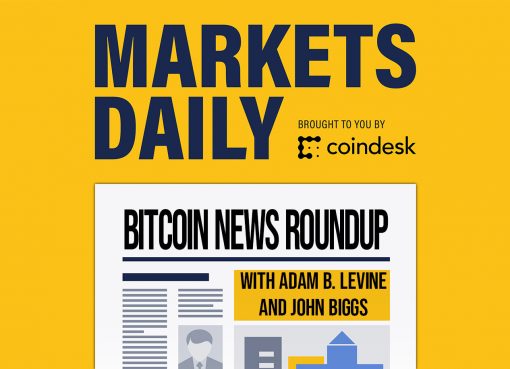Bitcoin has at last broken convincingly above the all-important $10,000 mark, but why has it struggled so much in recent months when gold has soared to an all-time high?
Earlier this year, digital-asset investors were aflutter over the trillions of dollars of central-bank money injections in response to the coronavirus-induced global recession. The bet was that the flood of liquidity would eventually lead to inflation, in turn driving up prices for both gold, historically seen as a hedge against currency debasement, and bitcoin, sometimes referred to as “digital gold” or “Gold 2.0” due to its scarce supply.
You’re reading First Mover, CryptoX’s daily markets newsletter. Assembled by the CryptoX Markets Team, First Mover starts your day with the most up-to-date sentiment around crypto markets, which of course never close, putting in context every wild swing in bitcoin and more. We follow the money so you don’t have to. You can subscribe here.
Yet since the end of April, when the coronavirus-related market gyrations subsided, bitcoin has lagged behind gold, frustrating the cryptocurrency’s investment narrative.
Gold prices have surged during the period, last week topping the all-time closing high of $1,891.90 an ounce reached in 2011, and are now trading at a record intraday high of $1,940 per ounce. The previous lifetime high of $1,921 was reached in September 2011.
Bitcoin, meanwhile, has been stuck in a narrow trading range since April and only just last night clambered to $10,200, a level not far off half of its all-time-high of $20,000 reached in 2017.
According to a handful of investors and analysts interviewed by CryptoX, bitcoin is far less mature than gold and thus may lack a credible history as an inflation hedge. So it’s struggled to draw hedging bids despite a recent uptick in inflation expectations.
“Bitcoin’s inflation sensitivity hasn’t been tested in the last 10 years as there hasn’t been a sustained rise in price pressures.” Charlie Morris, founder of the investment firm ByteTree Asset Management, said in an audio interview via WhatsApp.
It’s a shift in tone from a few months ago, when the bullish hype over bitcoin was so ubiquitous that it crowded out any reservations about bitcoin’s limited trading history or market size. Suddenly, there’s no shortage of caveats to explain why bitcoin hasn’t reflected the inflation expectations that seem to be buoying gold.
To add insult to injury, other corners of cryptocurrency markets are white-hot: ether, the second-largest cryptocurrency after bitcoin, has gained some 150% this year. Bitcoin is up 42% in 2020.
“Bitcoin has its own microeconomics very unique to crypto, including mining difficulty cycles, the changing regulatory environment and other factors that have little to do with inflation,” Richard Rosenblum, co-founder of GSR, told First Mover in a Telegram chat.

U.S. inflation expectations, as implied in the market for the US 10-year breakeven inflation rate, have risen to 1.51%, the highest since February. They’ve climbed from 0.5% on March 19, as the Federal Reserve’s balance sheet expanded by more than $3 trillion.
Bitcoin initially rose alongside the uptick in inflation expectations. The move from $3,867 to $10,000 seen in the two months to mid-May was likely fueled by the bullish narrative surrounding the May 12 halving. Since then, the cryptocurrency was locked in the range of $9,000 to $10,000 up until July 26, while inflation expectations continued to rise.
Gold, however, has drawn a consistent bid over the past four months, given its long history of serving as an inflation hedge, according to Joseph Trevisani, an analyst at FXStreet and former proprietary trader at Credit Suisse.
The yellow metal rose by an average 15% in real or inflation adjusted terms in the eight years between 1974 to 2008 when annual U.S. inflation, as measured by the consumer price index, was above 5%, according to The Journal of Wealth Management. Gold more than doubled to about $1,920 from $850 in the three years following the mid-2008 crash, as the Fed’s emergency liquidity injections pushed inflation expectations higher.
“Gold’s history as an inflation hedge is well known,” Trevisani told First Mover in a Slack chat. “Gold is a long-standing hedge against catastrophe. Bitcoin is not, or at least it is unproven.”
Indeed, bitcoin’s entire existence, since it was launched in early 2009, has taken place in a low inflation environment. The 10-year breakeven inflation rate fell from 1.6% to -0.62% in the two years through 2013, and it remained stuck in a range between 0% and 0.8% from 2014 to January 2020. That’s well below the Fed’s 2% target for annual inflation.
The gold market, at around $10 trillion, has sufficient depth and liquidity to absorb large hedging-related or haven inflows. Bitcoin’s market capitalization is comparatively paltry, at $189 billion.
“Gold is like a tanker, while bitcoin is much more like a speedboat,” Gavin Smith, CEO of the cryptocurrency hedge fund Panxora, told First Mover in a telephone interview. “However, looking out three to five years, you’ll see the trajectory of both, and you’ll say both were an inflation play.”
Another factor stopping institutions and other traditional investors from making big portfolio allocations to bitcoin is a belief that its price action and network fundamentals aren’t as intimately connected as gold to the fate of the global economy.
“Bitcoin is interesting but I think that it tells us little about anything in the real world,” Marc Chandler, a former chief currency strategist for the giant British bank HSBC, told First Mover in a LinkedIn chat.
Central banks, which don’t invest in bitcoin, often buy gold in times of stress, and they were net buyers during the virus-stricken first quarter, according to the data source Gold Hub.
“Nothing is up quite as much as gold,” Mati Greenspan, founder of the cryptocurrency and foreign-exchange analysis firm Quantum Economics, wrote Friday in an e-mail to subscribers. “The absence of a major bitcoin rally is also a bit puzzling, especially as one of the leading narratives for the current action in gold is the lack of confidence in central banks. Possibly it will join in later on. I guess we’ll see.”
After bitcoin’s rise on Sunday, only time will tell if that process has just started.
Tweet of the day
Bitcoin watch

BTC: Price: $10,241 (BPI) | 24-Hr High: $10,334 | 24-Hr Low: $9,829
Trend: Bitcoin may be on the cusp of major bull run, having cleared a major resistance at the weekend, according to one analyst.
The cryptocurrency jumped over 8% in the seven days to July 26, violating a trendline connecting the December 2017 and July 2019 highs. “This could be the real deal, we could be on the first serious step towards a bull run of epic magnitude,” popular analyst Lark Davis tweeted early on Monday.
Some traders are now betting on a move to $20,000 over the next four months. Indeed, the breakout above the 2.5-year-long falling trendline is a major bullish development. However, BTC is yet to cross above resistance at $10,400 – a horizontal resistance line drawn linking the February and June highs.
The cryptocurrency has failed multiple times to keep gains above $10,000 over the last 12 months. As such, the bulls would be better off observing caution as long as prices are held below $10,400.
A break above that level, if confirmed, would open the doors to $11,000. On the other hand, a failure to establish a strong foothold above $10,000 could invite stronger selling pressure.
At press time, bitcoin is changing hands near $10,241, representing a 3% gain on the day.
The leader in blockchain news, CryptoX is a media outlet that strives for the highest journalistic standards and abides by a strict set of editorial policies. CryptoX is an independent operating subsidiary of Digital Currency Group, which invests in cryptocurrencies and blockchain startups.






